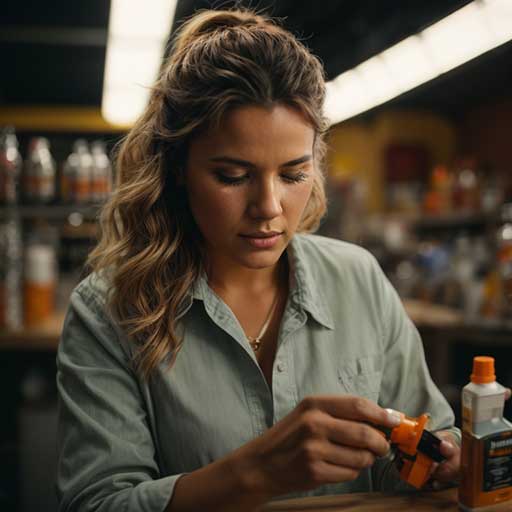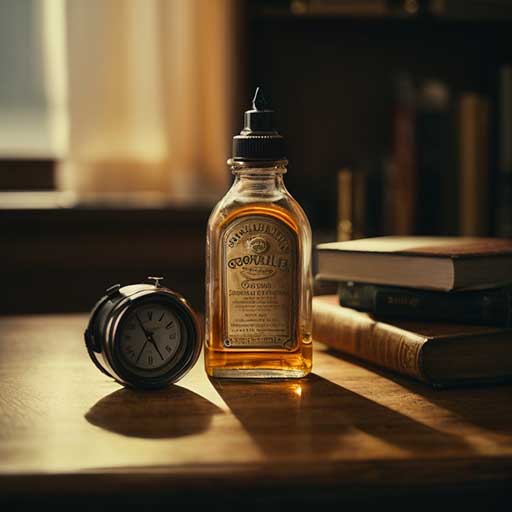
What Is Gorilla Glue Made Of?
Gorilla glue is made of a polyurethane-based adhesive. It is a waterproof and incredibly strong adhesive commonly used in construction and diy projects.
Gorilla glue is a popular adhesive brand that has become a household name in the construction industry. Known for its waterproof and strong bonding capabilities, it is used in various crafts, construction projects, and home repairs. The glue is made up of a polyurethane-based adhesive, which creates a chemical reaction when exposed to moisture.
The reaction expands and creates a foam-like texture, which fills any gaps or spaces in the area being bonded. Once dried, the glue forms a bond that is moisture-resistant and incredibly strong. This feature makes it an ideal adhesive for outdoor projects or repairs that are frequently exposed to water or moisture.
The Story Behind Gorilla Glue: Understanding Its Origins
Gorilla glue is a popular adhesive known for its strength and versatility. The unique formula of this glue is a well-kept secret, but its origins can be traced back to the early 1990s. The founder of the company, mark singer, was trying to create a strong adhesive that could withstand extreme conditions.
After several experiments, he developed the first version of gorilla glue. The product was initially sold to woodworkers and carpenters, but its popularity grew as more people discovered its effectiveness. Today, gorilla glue is widely used in various industries, from construction to arts and crafts.
Its rise in the market is a testimony to its strength and reliability, and it remains one of the top choices for those seeking a powerful adhesive.
Breaking Down The Formula: What Makes Gorilla Glue So Strong?
Gorilla glue is a versatile adhesive that has earned a reputation for its strength and durability. The composition of gorilla glue includes polyurethane and various chemicals that, when combined, trigger a chemical reaction that creates a powerful adhesive bond. The chemicals in the glue foam up as they react, filling any gaps or crevices in the materials being bonded.
The strength of the bond created by gorilla glue makes it suitable for a wide range of applications, including woodworking, metalworking, and even shoe repair. Whether it’s used for a small diy project or a larger industrial application, gorilla glue’s ability to create a strong bond makes it an excellent choice for anyone looking for a reliable adhesive.
The Secret Ingredients: Spotlight On The Components Of Gorilla Glue

Gorilla glue is a powerful adhesive that bonds almost anything together. The glue contains a unique combination of ingredients that give it its strength and versatility. Some of the essential components include water, polyurethane, and isocyanate. Each ingredient plays a key role in the glue’s performance, and together they work to create a strong and durable bond that can withstand extreme conditions.
The water helps to activate the glue and initiate the curing process, while the polyurethane gives it flexibility and adhesive strength. Isocyanates are added to help improve the bond’s overall strength and increase its resistance to water and heat. Understanding the contribution of each ingredient is crucial to fully grasp the science behind gorilla glue and appreciate its power.
The Risks And Safety Measures: Protecting Yourself While Using Gorilla Glue

Gorilla glue is a popular adhesive used in many diy projects. However, it’s important to know the potential safety risks when using this product. One of the biggest dangers is skin irritation, which can be caused by contact with the glue.
It’s recommended to wear gloves and protective eyewear when handling gorilla glue and to keep it out of reach of children and pets. Additionally, it’s important to use the glue in a well-ventilated area to avoid inhaling any fumes. If accidentally ingested, seek immediate medical attention.
By following these safety measures, you can safely use gorilla glue in your projects without risking any harm to yourself or others.
Frequently Asked Questions On What Is Gorilla Glue Made Of
What Is Gorilla Glue Made Of?
Gorilla glue is a polyurethane adhesive composed of a combination of isocyanate and polyol resin. This results in a strong bond that can withstand significant amounts of pressure and water exposure.
How Long Does Gorilla Glue Take To Dry?

Gorilla glue dries in 10-45 minutes when under pressure while it takes 80% of full cure in 1-2 hours and 100% in 24 hours. Climate and humidity can affect drying time.
Is Gorilla Glue Heat Resistant?
Gorilla glue can withstand temperatures up to 200°f or 93°c. It works best when applied to surfaces that are clean, dry, and free from dust, grease, and oil.
Can Gorilla Glue Be Sanded?
Yes, gorilla glue can be sanded or painted over once it is fully cured. Sanding the glue before it is cured will cause it to break apart and not set properly.
Is Gorilla Glue Waterproof?
Yes, gorilla glue is waterproof and can be used for both indoor and outdoor projects. It can even be submerged in water and still maintain its adhesive properties.
Conclusion
Gorilla glue is a multi-purpose adhesive that can bond almost anything with ease and strength. Its unique formula contains isocyanate and polyurethane, creating an exothermic chemical reaction when mixed together. This reaction produces a strong and durable bond that withstands time, moisture, and extreme temperatures.
Gorilla glue is versatile and can be used for a variety of projects, from woodwork to diy home repairs. It is easy to use, but it requires careful handling and preparation before application. Gorilla glue’s effectiveness and popularity have made it a preferred choice for consumers looking to tackle challenging projects.
So the next time you need a reliable adhesive that can do it all, consider gorilla glue and experience the strength and versatility of this incredible bonding agent.
